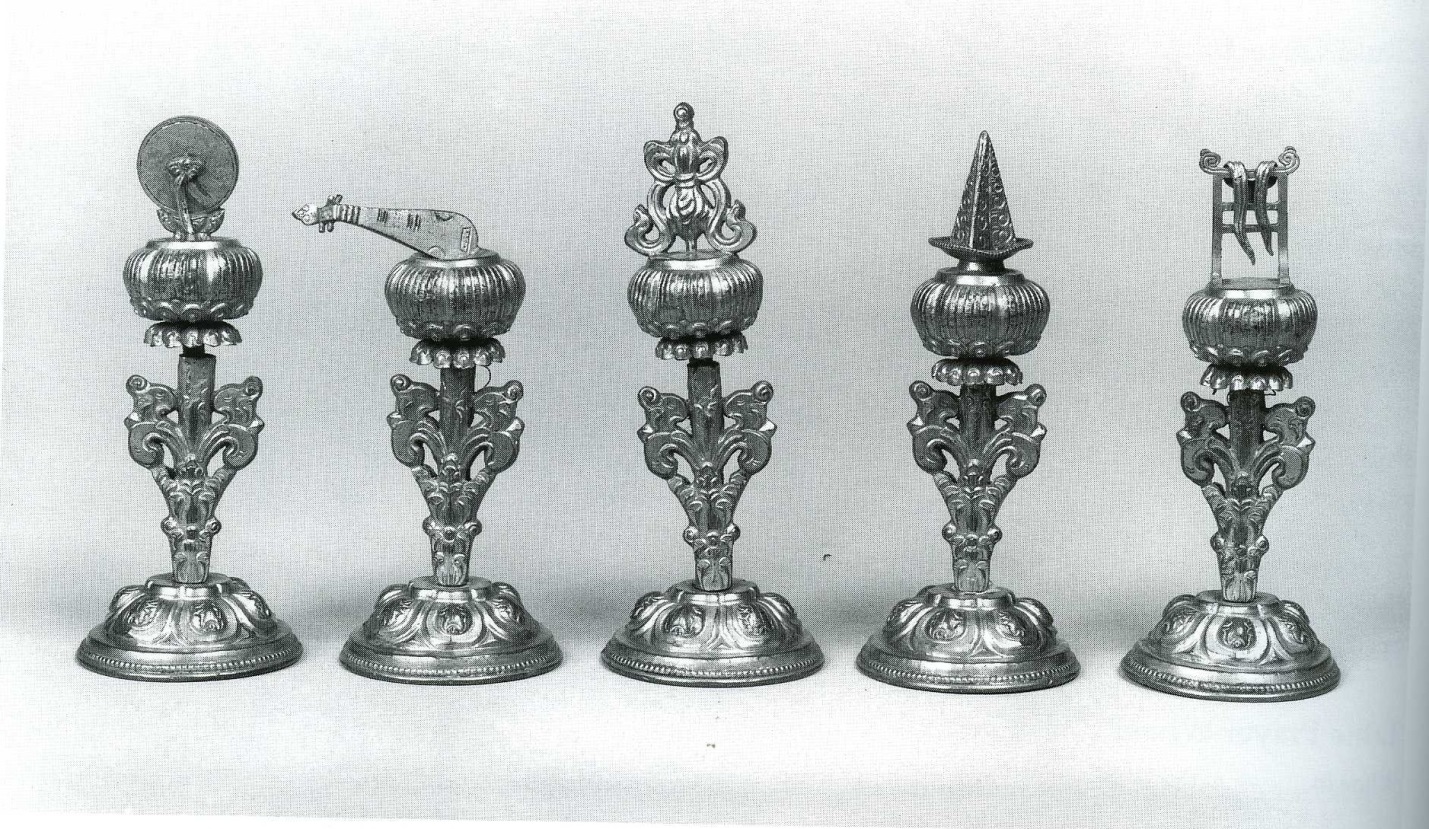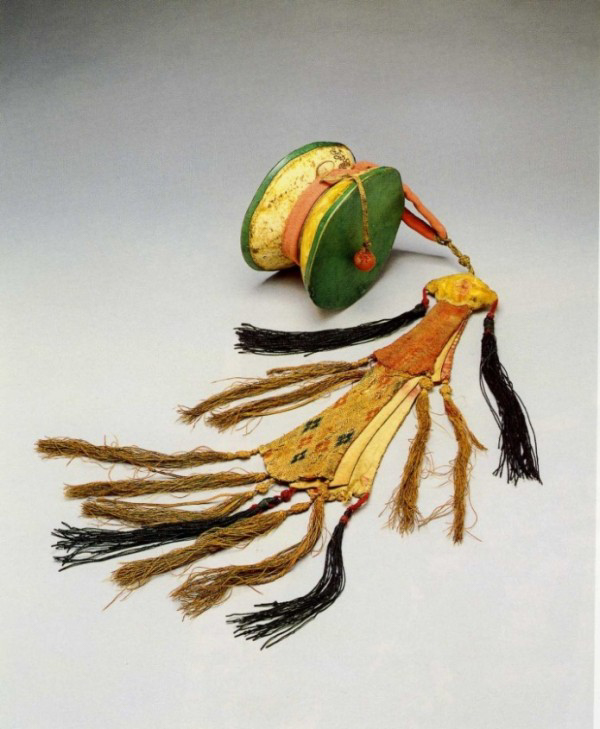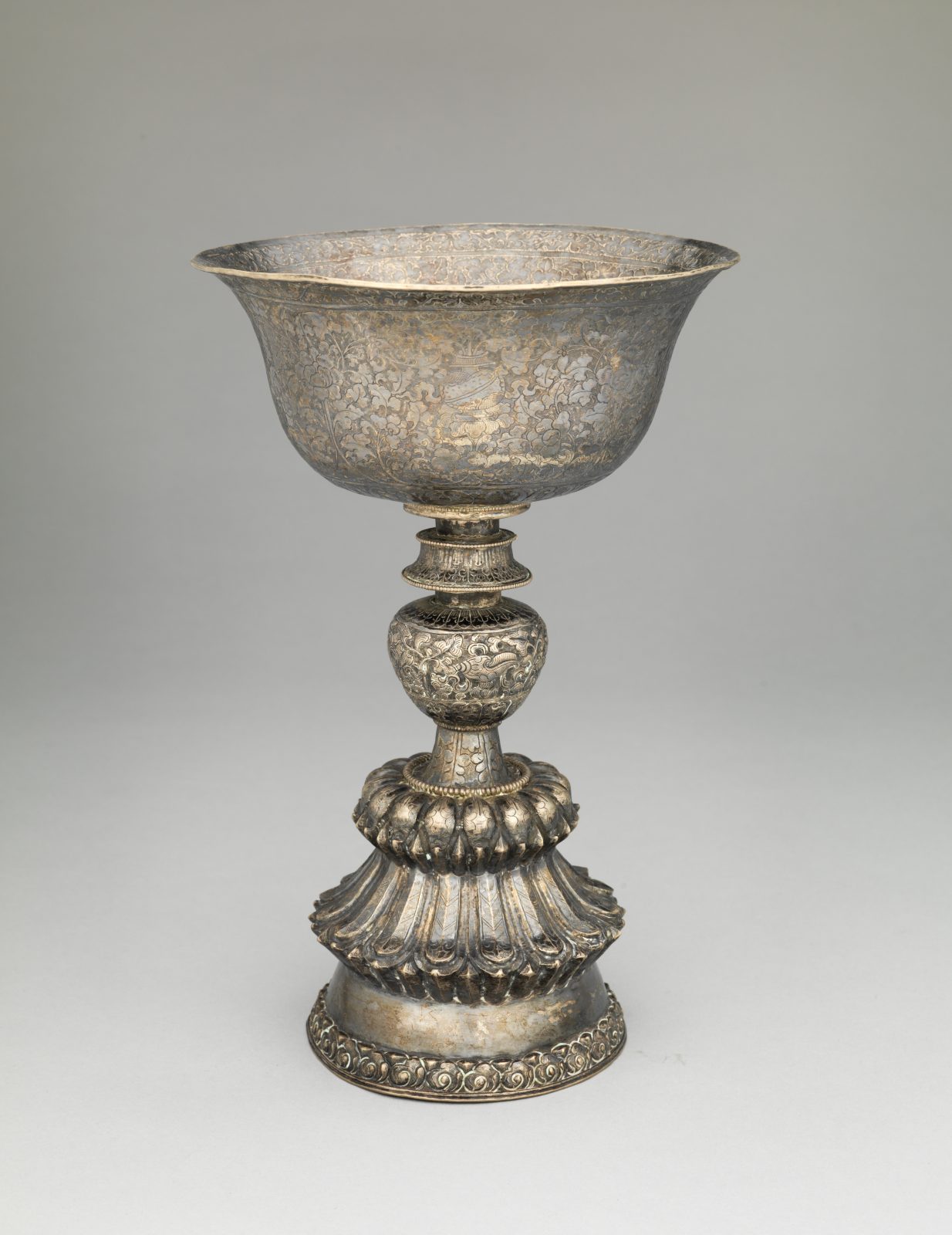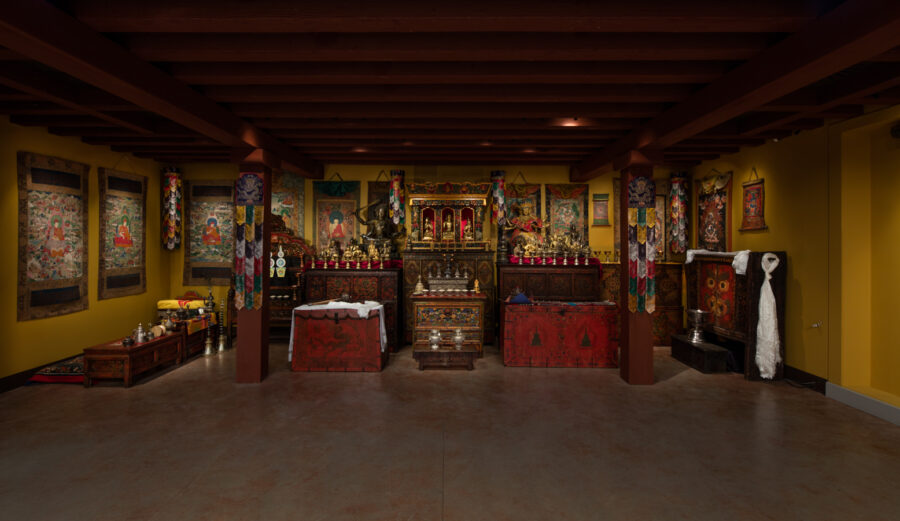The Rubin Museum’s Tibetan Buddhist Shrine Room opened to the public in 2010, when it debuted as part of the Gateway to Himalayan Art exhibition. Attracting a passionate fan base ever since its unveiling, the Shrine Room encompasses over 130 objects that represent the devotional and ritual objects usually found in Buddhist households throughout Tibet.
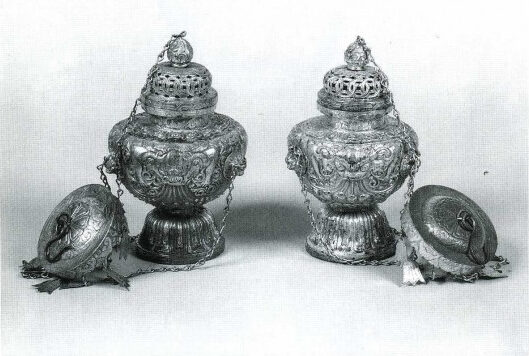
Incense Vessels; Tibet, China, or Mongolia; 18th century; silver plate over white metal, hand-hammered repoussé designs; Jacques Marchais Museum of Tibetan Art; L2013.22.2a-b

